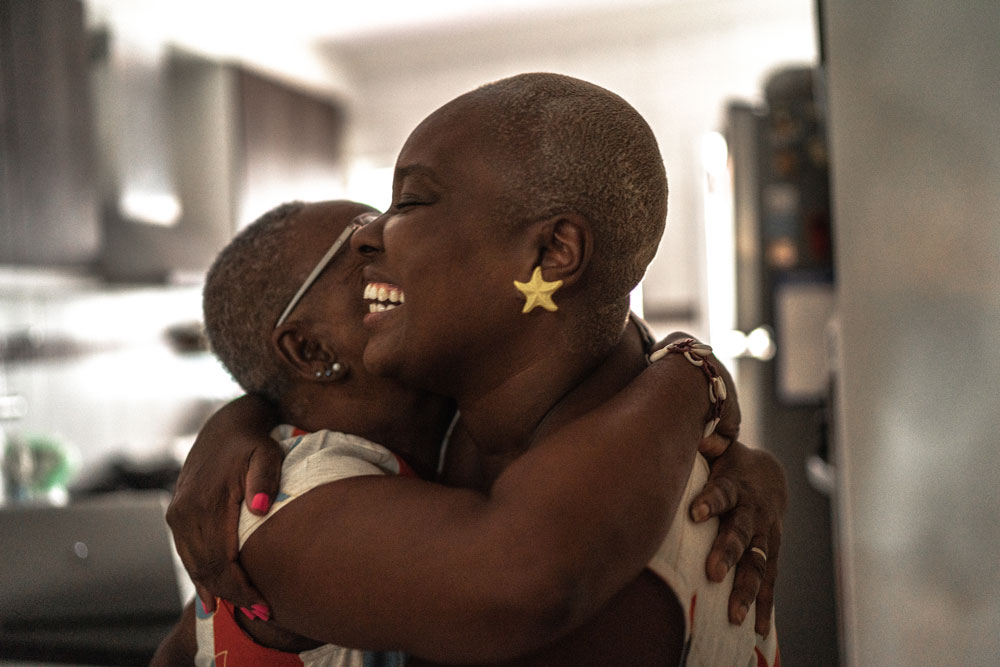Inclusion for all: Expanding trial accessibility for transgender and nonbinary patients
Drug developers and the clinical research community are working to increase diversity, equity, inclusion and belonging within clinical trials. By recruiting diverse patient populations, study results are more reflective of real-world patient populations and widen access to care. As a start, our industry has predominantly focused on racial and ethnic DEI. That’s critical work, but diversity extends beyond that into other areas too, such as gender identity, disability and socioeconomic status.
Thinking particularly about gender identity, there are an estimated 1.2 million nonbinary adults and 1.4 million transgender adults in the U.S. alone. Both communities are underrepresented in clinical trials, likely due to a lack of tracking within clinical trial systems but also due to fear and mistrust of the healthcare and pharmaceutical industries by many community members.
Studies show many trans and nonbinary people face health inequities and don’t trust the health care system because they feel it’s failed them. According to a 2018 Stonewall report conducted in the U.K., 32 percent of trans people polled reported unequal treatment during health care interactions, and 20 percent had been pressured to suppress their gender identity when accessing health care services. The State of the LGBTQ Community in 2020 survey found that nearly one-third of transgender individuals postponed or avoided seeking medical care because they feared discrimination. Twenty-five percent reported that a doctor or provider refused to see them because of actual or perceived gender identity and 32 percent reported that they were intentionally misgendered or called the wrong name by their doctor or provider. Patients who mistrust the healthcare system are typically apprehensive about clinical research as well. So, our first task in reaching trans and nonbinary people is understanding the barriers they might face during a clinical trial.
Discrimination: Advocacy groups report that trans and nonbinary people have been denied access to health care because of their gender identity. But discrimination can also occur in subtler ways, such as misgendering a patient, site staff expressing inappropriate curiosity, or discussing a patient’s gender with others without patient consent.
Names and pronouns: A patient’s legal name — which would be required during a trial— may not be the name that the patient uses day to day, particularly if it doesn’t match with their gender identity. So, everyone should be asked (and called by) their preferred names. And while someone might present as male or female, asking a patient for their pronouns is the only way to know for certain.
Medical and anatomical discussions: Trans and nonbinary people might be uncomfortable with parts of their anatomy that don’t align with their gender identity. Site staff can ask how patients would like to communicate in these situations. For example, a patient might want to use slang or diagrams rather than anatomical terminology.
Site inclusivity: Transgender and Nonbinary people may prefer gender-neutral bathrooms at a study site, as well as private areas for medical discussions and consenting. Also, providing clear visual markers, such as posters, highlighting that the site is a safe and welcoming place is a good start in making patients feel comfortable.
Intake forms: In almost every trial, forms offer only two gender choices: male or female. But advocacy groups recommend including additional choices, such as trans male, trans female, nonbinary, and a space for the respondent to offer another response. At present, few electronic health records have these options available in their systems, offering an area of change that could make a big difference to patient inclusivity. Intake forms are also a good place to record the patient’s preferred name and pronouns in addition to the patient’s sex assigned at birth (which may be relevant to the trial) and legal name. This is important information for the medical team, when dosing may vary by gender, so is a key element to safe inclusive practices. Sharing with patients how this information will be used can make them feel more comfortable providing these details.
Dosing: Within healthcare, there is minimal information currently available on dosing adjustments that may be required during or after transition, or the potential impact of gender-affirming hormone therapy (GAHT). This therefore translates to clinical research, where safety and accurate dosing are of paramount importance.
Trans and nonbinary people need and will use many of the medications being tested in clinical trials and therefore should be represented in research. But we also need to ensure the safety of all participants. Drug developers should study good dosing practices for people using GAHT to enable more data to make sound decisions. A science-backed strategy can open studies to more populations.
Historically, change in the industry has often been driven by regulatory requirements. In our review of global regulations, gender identity is mentioned only briefly by the FDA. To advance inclusivity for transgender and non-binary patients, both further research on dosing and detailed guidance from regulators are therefore required.
Sound criteria for recruiting trans and nonbinary people without creating additional hardships for them is also needed. What practical measures can be taken to encourage their participation? That’s one of the questions we’re working on at Parexel’s Patient Innovation Center. We’re currently reviewing a range of study protocols, looking specifically at gender requirements. Where can we be more inclusive? When we call for cis-gendered patients, is it out of medical necessity? Or are we sometimes too reliant on historical models?
Ensuring equity for all patients will require change. And in biopharma, change often happens incrementally. So, let’s begin now — initiating discussions, undertaking research, calling for regulatory guidance, and practicing inclusivity in our daily work.
Related Insights
Article
3 ways to incorporate DE&I in your communications strategy
Sep 29, 2021
Video
The 2024 FDA Diversity Guidance Update: What does it mean for patients, sites, sponsors and CROs
Aug 22, 2024
Webinar
In Conversation: Leadership Lessons on Diversity, Equity, & Inclusion, and the Future of Work
Apr 29, 2021
Blog
Toward more inclusive studies: Reaching and retaining patients from underrepresented communities
Apr 25, 2022
Video
Part 2: Risk-based Quality Management Video (RBQM) Series
Nov 11, 2021
Video
A Life in a Day
Jul 28, 2022
Video
Parexel Site Alliances
Jul 13, 2022
Video
Nurse Advisory Panel
Jul 13, 2022
Video
Ensuring Diversity & Inclusion for Clinical Trials
Jul 8, 2022
Blog
Parexel names first Patient Ambassador
Jun 17, 2022
Blog
Patient Advocacy Groups: A vital partner for sponsors that understand how to engage with patients
May 3, 2022
Blog
Patients as Partners 2022: Moving from Insights to Action
May 3, 2022
Related Insights
Article
3 ways to incorporate DE&I in your communications strategy
Sep 29, 2021
Video
The 2024 FDA Diversity Guidance Update: What does it mean for patients, sites, sponsors and CROs
Aug 22, 2024
Webinar
In Conversation: Leadership Lessons on Diversity, Equity, & Inclusion, and the Future of Work
Apr 29, 2021
Blog
Toward more inclusive studies: Reaching and retaining patients from underrepresented communities
Apr 25, 2022
Video
Part 2: Risk-based Quality Management Video (RBQM) Series
Nov 11, 2021
Video
A Life in a Day
Jul 28, 2022
Video
Parexel Site Alliances
Jul 13, 2022
Video
Nurse Advisory Panel
Jul 13, 2022
Video
Ensuring Diversity & Inclusion for Clinical Trials
Jul 8, 2022
Blog
Parexel names first Patient Ambassador
Jun 17, 2022
Blog
Patient Advocacy Groups: A vital partner for sponsors that understand how to engage with patients
May 3, 2022
Blog
Patients as Partners 2022: Moving from Insights to Action
May 3, 2022







